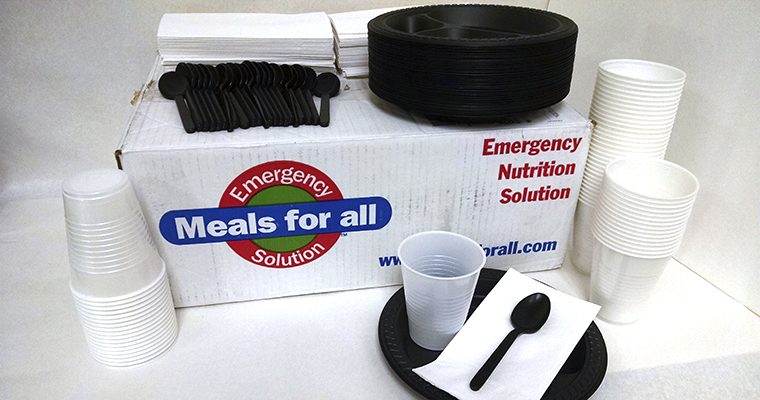Hurricanes, wildfires, tornadoes, floods, earthquakes. There’s no stopping disasters. Even so, you can reduce their impact on your healthcare community with emergency planning and preparedness.
“I don’t want your lack of disaster planning to be your next disaster,” says Linda Eck Mills, MBA, RDN, LDN, FADA, a Midwest Regional Sales Executive of Meals For All, a provider of emergency food and water resources and information.
With 22 billion-dollar weather and climate disasters in the United States 2020, emergency preparedness is a must—even if you’re not at risk of a major natural calamity. Things as common as power outages, water main breaks or civil unrest can trigger an emergency situation.
CMS (Centers for Medicare & Medicaid Services) works to ensure adequate planning for natural and man-made disasters. Using federal guidelines, agencies in each state, county or municipality set specific requirements. Mandates in your area may vary, but could include requiring enough emergency food (such as a three- to seven-day supply) and water (such as 1- to 1½-gallons per person per day) to address likely emergencies.
Those are rules. Before you get to the rule book, Eck Mills says there are five steps to making sure you’re able to manage safety and nutrition during an emergency.
Emergency readiness starts early
1. Plan for your emergency
Identify at least the top five disasters or emergencies that could happen in your geographic area, and have policies and procedures for each. “Keep in mind that there could be multiple disasters going on at the same time,” she says. “In 2020, we had COVID-19 in addition to natural disasters.”
2. Keep food on site
How many days of supplies do you have in house? Relying on a memorandum of understanding (MOU) for restocking is risky—only as good as the supply chain, which can be disrupted during emergencies. There is considerable peace of mind and value with a pre-planned, shelf-stable meal program.
3. Meet everyone’s diet needs
It’s essential to adequately meet the needs of both the medical/therapeutic diets and the texture modified diets with familiar comfort foods, including nutritional analysis. Consider your number of licensed beds, not your census. In an emergency, you may need to feed residents or patients from another location.
4. Manage water properly
Big drums of water are wonderful if you have someone to move them around. Consider the size of the containers and how easy they are to distribute. Again, beware of MOUs and have water on site. “If the whole county needs water at the same time, that dairy down the road isn’t going to have enough tanks to go around.”
5. Have resources ready
This starts with staff education and training about emergency preparedness. Print out policies, procedures and plans. “You cannot rely on electronics because you may not have electricity to retrieve information.” Gordon Food Service recommends having a printed copy of your menu and tray cards/tickets for a three-day period, in addition to an updated printout of diet order lists.
Know how food will be used
In an emergency, healthcare locations should first use food that’s on hand in this order:
- Perishable items
- Frozen foods (unless compromised by temperature changes)
- Non-perishable items and emergency supplies
The risk of counting on daily food inventory, Eck Mills says, is uncertainty.
“I talk to foodservice directors all the time and they say, ‘Oh, I’m going to use the food in my refrigerator and freezer, and it won’t be a problem because we have a generator.’ Then they find out the foodservice area isn’t on the generator.”
That’s why planning matters, she says. Power to the fridge doesn’t mean power to the oven. And what if residents must be evacuated? If the emergency strikes during third shift, it’s unlikely the foodservice team will be there, leaving the nursing team to handle meals.
Guard their safety, your reputation
Eck Mills touts Meals For All’s complete emergency supply of food for most therapeutic diets and modified textures. With a 10-year shelf life for foods and a water supply that lasts 50 years, the company also updates disaster preparedness policies and procedures manuals to address emergency foodservice.
Being prepared for emergencies and stocking food and water is more than just a requirement. Eck Mills points out that it protects the safety of patients/residents, and it instills confidence in your business.
“If you’re not adequately looking after the health and wellbeing of those in your care, you will have people leaving after a disaster when loved ones see that the care of their mother was not what was expected.”
Contact your Gordon Food Service Sales Representative to learn more about sample menus and shelf-stable products, including the partnership with Meals For All emergency preparedness.











